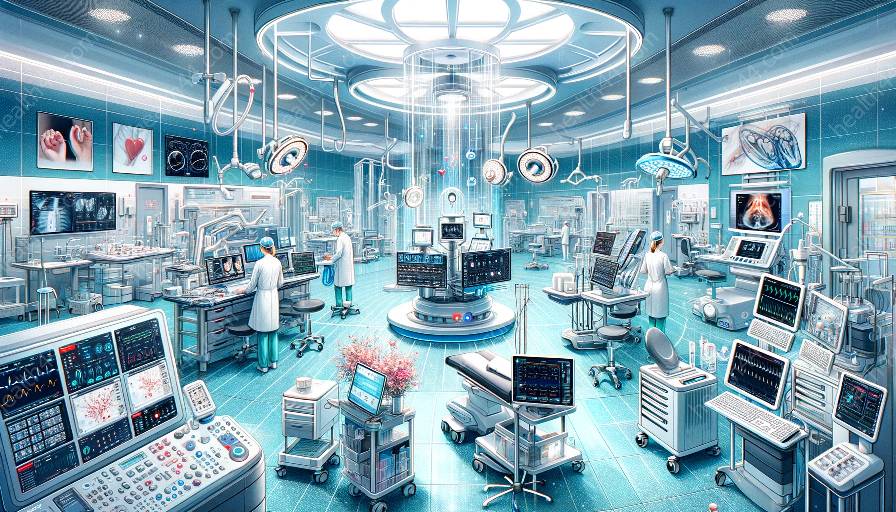Neurostimulation devices represent a cutting-edge field that holds great promise for revolutionizing the treatment of neurological disorders. At the intersection of biotechnology and medical devices, these technologies offer both significant challenges and exciting opportunities. In this topic cluster, we will delve into the complex landscape of neurostimulation devices, exploring how biotechnology is driving innovation and shaping the future of medical interventions for neurological conditions.
The Role of Biotechnology in Neurostimulation Devices
Biotechnology plays a pivotal role in the development and advancement of neurostimulation devices. By harnessing the power of living organisms, cells, and biological systems, biotechnology enables the creation of cutting-edge solutions that are tailored to address the intricacies of the nervous system. Through the integration of biotechnological principles, neurostimulation devices can deliver targeted, precise interventions that have the potential to significantly improve patient outcomes.
Challenges in Developing Neurostimulation Devices
Despite the promise of neurostimulation devices, their development is not without challenges. One of the key obstacles lies in achieving compatibility between biotechnology and medical device engineering. Integrating biologically derived components with traditional device materials requires meticulous design and engineering to ensure safety, efficacy, and long-term functionality.
Moreover, the complex nature of neurological disorders presents a formidable challenge. The diversity of neurological conditions demands a nuanced approach to device design, as each disorder may necessitate a unique set of functionalities and performance criteria. Additionally, ensuring the biocompatibility of neurostimulation devices, particularly in long-term implantable applications, is a critical consideration that requires rigorous testing and validation.
Opportunities for Innovation and Impact
Amidst the challenges, there are abundant opportunities for innovation and impact in the realm of neurostimulation devices. Biotechnology offers a wealth of tools and techniques that empower researchers and engineers to develop next-generation devices with enhanced capabilities. From leveraging novel biomaterials to incorporating advanced biocompatible coatings, biotechnology opens pathways to creating neurostimulation devices that are not only effective but also seamlessly integrated with the body’s physiological processes.
Furthermore, the convergence of biotechnology with data analytics and machine learning presents an exciting frontier in neurostimulation technology. By harnessing the power of biologically informed algorithms, researchers can optimize stimulation parameters and personalize treatment regimens, thereby maximizing therapeutic efficacy while minimizing adverse effects.
Biotechnology's Impact on Patient Care
Ultimately, the impact of biotechnology on neurostimulation devices extends to patient care and quality of life. Through the development of biotechnologically enhanced devices, patients with neurological conditions stand to benefit from more targeted, precise interventions that offer improved symptom management and functional restoration. The potential to unlock new avenues for neurorehabilitation and neural modulation holds profound implications for individuals suffering from a myriad of neurological disorders.
Regulatory and Ethical Considerations
As the landscape of neurostimulation devices continues to evolve, regulatory and ethical considerations come to the forefront. The intersection of biotechnology and medical devices raises questions about safety, data privacy, and equitable access to innovative treatments. Regulatory bodies and stakeholders must work collaboratively to establish robust frameworks that ensure the responsible development, deployment, and oversight of biotechnologically driven neurostimulation devices.
Moreover, ethical considerations surrounding the use of neurostimulation technologies, particularly in the context of neural interfacing and cognitive modulation, necessitate careful deliberation and thoughtful discourse. Balancing the potential benefits of biotechnology-enabled neurostimulation devices with the need to uphold patient autonomy, privacy, and informed consent represents a critical aspect of navigating the future landscape of this field.
Future Prospects and Collaborative Endeavors
Looking ahead, the future of neurostimulation devices with biotechnology holds promise for collaborative endeavors that span disciplines and sectors. The fusion of biotechnological innovation with medical device engineering is poised to yield groundbreaking solutions that transcend the boundaries of traditional therapeutic modalities. Through collaborative research initiatives and industry partnerships, the collective expertise of biotechnologists, engineers, neuroscientists, and healthcare practitioners can propel the development of neurostimulation devices to new heights, ensuring that patients receive the most advanced and effective treatments available.
As we navigate the complex landscape of neurostimulation devices with biotechnology, it is imperative to embrace the challenges and opportunities that lie ahead. By fostering cross-disciplinary collaboration, harnessing the power of biotechnological advancements, and prioritizing the well-being of patients, we can chart a course towards a future where neurostimulation devices with biotechnology stand as beacons of hope for individuals grappling with neurological conditions.


